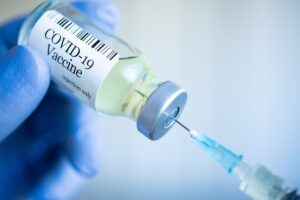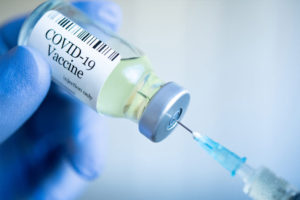
What Patients Need to Know About Vaccines
Protection from childhood vaccines can wear off over time. With age, adults need immunizations too, not just children. According to the CDC, below are what vaccines you need depending on your age, gender, health condition, and some other circumstances.
Vaccines for Young Adults Age 19 to 26 Years
Young Adults ages 19-26: The CDC recommends young adults have the seasonal flu vaccine every year, as well as your Td or Tdap vaccine (Tetanus, diphtheria, and pertussis). You also need the HPV vaccine (protects against of human papillomaviruses that causes cervical, anal, and other cancers). There may be other vaccine shots that you need for your employer or school requirements. For example, this coming Fall, it is required in many universities to have the COVID-19 vaccine in order to live on campus and attend classes.
Vaccines for Adults Age 50 Years and Older
- You need to receive the shingles vaccine, which protects against shingles and the complications that come with it. 1 in 3 Americans over 60 years old develop the shingles in their lifetime.
- You also need the PPSV23 shot (Pneumococcal polysaccharide vaccine), which protects against diseases like meningitis and bloodstream infections.
- You need the PCV13 shot (Pneumococcal conjugate vaccine), which protects you against pneumococcal disease and pneumonia. Pneumonia becomes more dangerous as you age, so it is imperative that you receive this vaccine.
Adults with Underlining Health Conditions
- Adults with health conditions
- All adults need the flu shot
- Talk to your doctor about which vaccine shots you should take depending on what health conditions you have.
- Pregnant Women
- If you are pregnant, you need two vaccines during each pregnancy:
- Tdap vaccine to help protect against the whooping cough
- Flu shot to help protect against influenzas
- You may need more vaccines. Talk to your doctor about a specific plan for you and your pregnancy.
Healthcare Workers
- Flu shot
- Hepatitis B: if you don’t have evidence of a completed hepB vaccine series, or you don’t have an up-to-date blood test that shows that you are immune to hepatitis B, then you need to get the 3-dose series. Talk to your doctor and go over what you need.
- MMR: If you were born in 1957 or later and you haven’t received the MMR vaccine, you need 2 doses to protect yourself from the Measles, Mumps, and Rubella.
- Varicella: This is the chickenpox vaccine, which is required for all healthcare workers
- Meningococcal: One dose.
International Travelers
Up-to-date with all recommended vaccinations. Find out which vaccines you need based on the “Vaccine Self-Assessment Tool” on the CDC website.
Immigrants and Refugees
- Refugees and immigrants need to get all vaccines recommended by the Advisory Committee on Immunization Practices (ACIP).

Understanding the COVID-19 Vaccination Situation in the United States
With the Covid-19 pandemic now coming close to one full year of prominence and surging once again most eyes in the United States have begun to focus on the vaccination rollout soon to be taking place across the country in the hopes of seeing the end of the virus come soon. However, with an unprecedented turnaround for this vaccination and two different versions being released, misinformation and confusion are running rampant. This article will serve as your guide in understanding what the situation really is.
The Two Vaccines for COVID-19:
The first vaccine to meet the FDA’s requirements in order to be released to the public was Pfizer’s which is a pharmaceutical giant. Following that, Moderna, a biotech company that had never released a vaccine to the public, also passed testing with their vaccine and was granted emergency permission for it to be released for use on the general public with backing from the Center for Disease Control. Both vaccines use Messenger RNA (mRNA) to mimic the spikes found on the Coronavirus which when introduced to the immune system leads to antibodies for the Coronavirus. Once the antibodies have developed, the body is prepared for contact with the full virus and able to successfully fight it off. The differences between the two structurally lie in the lipid (fat) systems used to deliver the mRNA into the body. These differences are relatively minor and do not seem to have any tangible difference in efficacy as both vaccines were about 95% effective in trials across gender, age, ethnic, and racial demographics. Both vaccines are also administered across two doses.
The biggest difference between the vaccines is in their storage temperature. Pfizer’s vaccine must be stored at extremely cold temperatures and lose effectiveness five days after refrigeration. This has created logistic difficulties for transportation and storage, especially in areas of the country without comprehensive infrastructure built to accommodate those needs, or that are more difficult to reach from distribution centers. Moderna’s vaccine is able to be stored at -20 degrees celsius as opposed to Pfizer’s -75 degree needs, as well as lasting up to 30 days after refrigeration. This makes it significantly easier for storage and transportation which is why Moderna’s has received more support from the FDA and CDC. Both vaccines have been deemed safe with good safety profiles in clinical tests. Symptoms can develop after taking the vaccine such as fevers, swollen lymph nodes, pain at the injection site, fatigue, and chills. However, serious non-fatal symptoms were rare and did not meet the FDA levels needed to prevent emergency authorization.
Distribution of the Vaccine
The United States has acquired the rights to millions of vaccinations from both companies but has highly favored Moderna’s after its approval due to its advantages in storage and transportation. This is reflected in the greater than 3,000 sites set to receive the Moderna vaccine one day after approval as opposed to Pfizer’s 636. Currently, two hundred million vaccines have been purchased from Moderna by the United States with vaccines having been in production since testing and shipment already taking place. Following the distribution, states and local levels will determine the order in which vaccines are delivered, although it is expected for nearly all to follow federal level priority guidelines which place essential workers such as nurses and doctors at the front followed by the most at-risk individuals.

Minimizing your risk to the spread of COVID-19
Official CDC guidelines urge people to wear masks in public settings to limit the spread of COVID-19. Wearing a mask on public and mass transportation, at events and gatherings, in shopping malls, at food stores, and virtually any other place where you will be exposed to others has many benefits. Masks help protect yourself and others from getting or spreading COVID-19, therefore, it is important that you maximize a mask’s effect by properly utilizing it.
Masks with Two or More Layers
Make sure to wear a mask with two or more layers to limit particulate spread, and to wear the mask over your nose and mouth while securing it under your chin. However, there are additional things to avoid in the execution of wearing a mask. For example, refrain from putting a mask on an individual who is two years-old or younger or who has trouble breathing or cannot remove the mask without assistance. Additionally, try and refrain from wearing masks intended for healthcare workers (i.e. N95 respirators).
Masks that Cover Your Nose and Mouth
There are many choices when selecting the mask that is best for you. In this process, it is important to keep a few things in mind to ensure that you are maximizing the safety of yourself and others. Make sure the mask of your choice has two or more layers of breathable fabric, completely covers your nose and mouth, and fits snugly against your face (no gaping on the sides). Moreover, masks with exhalation valves or vents that allow virus particles to escape should never be worn. You may also wear a gaiter with two layers if you desire, however, if you wish to wear a face shield, be cautious, as effectiveness is rather unknown at this time. Also, if you wear glasses, it may be useful to find a mask that fits closely over your nose to limit fogging.
When wearing your mask, be sure to wash your hands before putting it on and never touch it while it is on your face. When removing your mask, handle it only by touching the ear loops or ties and wash it regularly with your laundry. Also, be sure to refrain from touching your eyes, nose, and mouth before washing your hands after mask removal.




